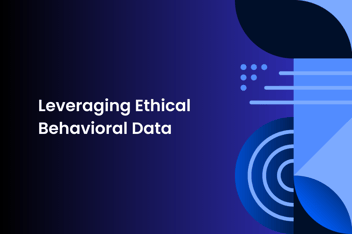Accurate measurement requires high-quality, zero-party sustainable data. As more entities move to respect their users and limit or restrict the use of third-party cookies, the entire ad tech ecosystem is facing profound change. Specifically, traditional ad measurement methodology will need to reinvent itself. The existing ad measurement tools are built primarily on third-party audiences, where the solution provider does not have a direct relationship with the consumer being exposed to advertising. Given this fact, every provider has relied on third-party cookies to identify who was exposed to what ad. Less than two years from now, this will no longer be possible.
That is a scary reality for the advertising ecosystem, and the ANA and 4A’s have gone on record with their disappointment. Still, it is worth remembering the cookie’s measurement shortcomings. Cookies only leave crumbs—they don’t paint the full picture of a brand’s audience. Forcing the industry to adopt more accurate measurement solutions will ultimately be a good thing for marketers. Yes, it will take work and some growing pains, but it will lead to a more thorough understanding of a brand’s audience and campaign performance.
The future of measurement and the impact on publishers
Cookies were crafted as dots to be connected. To that end, perhaps cookies should’ve been called crumbs. After all, they provide only a fragmented, partial picture of the customer journey, and they have caused a mess that users and platforms alike are trying to clean up. They have never been 100% accurate or as powerful as a continuous line of sight into consumer behavior.
Beyond the inherent issues with a measurement methodology dependent on connecting dots alone, cookies are problematic for several other reasons. First, they have unreliable shelf lives. Whether a cookie expires or is manually cleared by a user, they can disappear at rather inopportune time for publishers and advertisers alike. Second, some cookies are never captured at all, as many people turn to ad blockers and other tools to block cookies. Third, they are also device-specific, and they don’t work well on mobile, specifically in apps. The industry has accepted cookies as enough to meet minimum measurement requirements—as enough to get by—for quite some time. However, a growing number of marketers have been looking for more meaningful and complete measurement solutions, even before the changing regulations.
What is that more complete measurement solution? The simplest answer is zero-party, permission-based audiences and technology—solutions that don’t require cookies, identity matching or onboarding. Identity-based publishers that have direct relationships with users are uniquely positioned to weather cookies’ demise, or even benefit from it, because they can measure performance without them. For example, The New York Times, The Wall Street Journal and other publishers with subscription services; social media networks including Facebook and YouTube; and Amazon can all offer identity-based measurement solutions.
However, the impending measurement change is a tough pill to swallow for the bulk of publishers, particularly the news industry, because many news companies don’t require users to sign in to access content. They face a conundrum. People want their news on the fly, so requiring them to sign in can negatively impact the user base and reduce impressions. The trade-off is first-party data. Companies that require user IDs gain identity-based targeting and measurement capabilities.
A growing number of publishers are rolling out subscription or membership models, not just because digital subscriptions are a valuable revenue stream, but because they can use the first-party data to retarget users, to better understand their needs in order to improve their platform and to create effective targeted advertising programs with accurate measurement capabilities. Companies that lack zero-party data are scrambling to find a unique approach to measurement, and to serve addressable advertising. Currently, workarounds include using IP addresses as a proxy for third-party cookies, but the solution is not perfect, as some households have dynamic IP addresses that change every few days, or even every 30 minutes, to protect privacy and security.
Takeaways for publishers that don’t have identity-based measurement
EMARKETER estimates that nearly 88%, or $81 billion, of total U.S. digital display ad spending will transact programmatically by 2021; programmatic advertising is predicated on the use of the cookie. This industry is going to have a real gap in what it can and cannot measure, because not every publisher has identity-based audiences.
For those that don’t, options include resorting to a “spray and pray” model, which could lower CPMs, since targeted audiences cost more. From a measurement perspective, publishers are relegated to “spot measurement,” in which they measure little pieces of the campaign. This leads to measurement gaps and, therefore, questionable conclusions and a hard time proving incremental value.
Publishers should start asking questions of their measurement solution providers now to prepare for the not-so-distant cookieless future, such as:
- How can you measure the true value of my media without reliance on cookies?
- How can you provide a continuous line of sight into behavioral lift post-ad exposure?
- How do you measure the impact of ad exposure, even when users are anonymous?
The cookie crumbling indubitably causes challenges, but it will also nudge the industry forward. It will force publishers and advertisers to demand better measurement solutions. Adjusting to measurement in a cookieless world isn’t an easy fix, but by taking on the challenge, we’ll continue to see better solutions and more effective advertising. Visit our Ad Measurement page for more information about DISQO Brand Lift and Outcomes Lift.





